Effect of thickness of polycrystalline diamond layer and diameter of compact on residual thermal stress of PDC
-
摘要: 残余热应力是导致聚晶金刚石复合片(PDC)失效的原因之一。为提升PDC在实际使用过程中的性能,并为PDC的设计提供模拟计算依据,利用ANSYS建立PDC的参数模型,通过“热-结构”耦合法计算PDC的残余热应力值,分析PCD层和硬质合金层的厚度比及PDC直径对残余热应力分布特征的影响规律。结果表明:当PDC直径为16 mm、总厚度为13 mm时,其PCD层和硬质合金层的最佳厚度比为0.180;当PCD层厚度为2.0 mm时,PDC最佳直径值为18 mm;当PCD层厚度为3.0 mm时,应根据实际使用情况确定PDC最佳直径值。Abstract: Objectives: Polycrystalline diamond compact (PDC) is an ultra-high hardness composite material made from polycrystalline diamond (PCD) and cemented carbide through high temperature and high pressure sintering. PDC is widely used in oil and gas extraction, geothermal development, and coal field drilling. As drilling goes deeper, the formation pressure increases, and the geological rock layers become denser, harder, and more abrasive. Therefore, the comprehensive performance requirements for the drill bit and PDC are increasingly high. The presence of residual thermal stress can significantly weaken the performance of PDC, causing the PCD layer to fracture and detach, which is one of the important factors leading to the premature failure of PDC. Previous research methods for determining the residual thermal stress in PDC have certain limitations. Finite element simulation calculations can effectively compensate for these shortcomings. Therefore, this paper uses the ANSYS Workbench software to calculate and analyze the influence of the thickness ratio of the PCD layer to the cemented carbide layer in PDC and the diameter of PDC on residual thermal stress, providing references for the optimization of PDC design and performance improvement. Methods: ANSYS is one of the most commonly used finite element analysis software, which can effectively integrate multiple disciplines such as structural dynamics, thermodynamics, and fluid dynamics for simulation calculations. Using ANSYS, the model of PDC (assuming that temperature does not affect the physical properties of materials) can be established, and the residual thermal stress of PDC can be analyzed using the thermo-mechanical coupling method (which solves the impact of the temperature field on stress, strain, and displacement in the structure). The specific calculation process in this study is as follows: (1) Select the calculation method for steady-state temperature field and structural mechanics field coupling. (2) Establish the geometric model of PDC. According to the axisymmetric characteristics of PDC, establish its 1/4 structure to save computational space. (3) Define the physical and mechanical properties of the PCD layer and the cemented carbide layer, and then perform mesh division. (4) Set boundary conditions and loads, using the temperature difference as the load, setting the reference temperature including the stress relaxation temperature of PDC, the axisymmetric boundary conditions of the model, as well as the heat convection boundary conditions between the outer surface of PDC and the air. (5) Perform result calculation and analysis. Results: Using the software to simulate the calculation of the residual thermal stress value and distribution during the unloading and cooling process of PDC, the following conclusions can be drawn: (1) The ANSYS simulation calculation shows that when the diameter of PDC is 16 mm and the total thickness is 13 mm, the optimal thickness of the PCD layer is 2.0 mm; (2) When the PCD layer thickness is 2.0 mm, the diameter of the composite piece can be selected as 18 mm, and the residual thermal stress of this specification of PDC is at the best value in the calculated range. When the PCD layer thickness is 3.0 mm, it cannot be decided based on a single residual thermal stress influence; this must rely on the specific application situation and the load condition, with a comprehensive consideration of the influence of the four residual thermal stresses; (3) The point of PDC diameter of 17 mm is one of the many fluctuation points, which may be a critical point. At this time, the radial displacement of the interface far from the center axis of PDC changes abruptly, causing the deflection of the entire PDC to change, and the axial tensile stress at the edge of the interface changes. Conclusion: The finite element calculation method can intuitively and clearly simulate the value and distribution of residual thermal stress during the unloading and cooling process of PDC, and effectively avoid the shortcomings of other experimental tests. It can provide useful ideas and suggestions for the design of PDC by analyzing the influence of the two appearance sizes, composite layer thickness, and diameter on the residual thermal stress of PDC, and drawing relevant conclusions. Based on the outstanding results in the simulation calculation, the conclusions obtained are tested by experiments to ensure the reliability of the final results.
-
物理指标 PCD层 硬质合金层 密度 ρ / (kg·m−3) 3 510 15 000 导热系数 (20 ℃) λ / (W·m−1·℃−1) 543 100 比热容 (20 ℃) c / (J·kg−1·℃−1) 790 230 热膨胀系数 (20 ℃) a / K−1 2.5× 10−6 5.2× 10−6 弹性模量 E / GPa 890 579 泊松比 ν 0.07 0.22 表 2 PDC最大残余热应力计算值
Table 2. Maximum residual thermal stress of PDC
位置 径向应力
极值
σxmax / MPa轴向应力
极值
σzmax / MPa剪切应力
极值
σxzmax / MPa第一
主应力
σfirst / MPaPCD层 −1 203/400 −486/808 −1 309/722 842 硬质合金层 −217/1 126 −1 288/406 −1 489/718 1 205 表 3 PCD层和硬质合金层不同厚度比的PCD层残余热应力极大值
Table 3. Maximum residual thermal stress of PCD layer with different thickness ratio
厚度比
λPCD层厚度
h / mm径向压应力极大值
σxmax / MPa轴向拉应力极大值
σzmax / MPa剪切应力极大值
σxzmax / MPa第一主应力
σfirst / MPa0.083 1.0 −1 480 640 651 694 0.130 1.5 −1 240 731 693 768 0.180 2.0 −1 202 808 722 842 0.238 2.5 −1 184 862 732 892 0.300 3.0 −1 179 934 744 961 0.368 3.5 −1 180 996 749 1 021 0.444 4.0 −1 180 1 070 759 1 095 表 4 不同PDC直径的PCD层残余热应力极值
Table 4. Maximum residual thermal stress of PCD layer with different diameter
PDC直径
d / mm径向压应力极大值
σxmax / MPa轴向拉应力极大值
σzmax/ MPa剪切应力极大值
σxzmax / MPa第一主应力
σfirst / MPa13 −1 187 822 723 854 14 −1 193 819 724 852 15 −1 198 805 722 839 16 −1 203 808 722 842 17 −1 207 936 738 959 18 −1 211 796 721 829 19 −1 214 914 738 939 20 −1 216 920 737 944 -
[1] 聂孟杰, 裴夤崟, 黄成志, 等. PDC性能优化及其钎焊技术研究现状 [J]. 电焊机,2023,53(4):63-72. doi: 10.7512/j.issn.1001-2303.2023.04.07NIE Mengjie, PEI Yinyin, HUANG Chengzhi, et al. Research status of performance optimization of polycrystalline diamond compact [J]. Electric Welding Machine,2023,53(4):63-72. doi: 10.7512/j.issn.1001-2303.2023.04.07 [2] 杨金华, 郭晓霞. PDC钻头技术发展现状与展望 [J]. 石油科技论坛,2018,37(1):33-38. doi: 10.3969/j.issn.1002-302x.2018.01.008YANG Jinhua, GUO Xiaoxia. The present status and outlook of PDC bit technology [J]. Oil Forum,2018,37(1):33-38. doi: 10.3969/j.issn.1002-302x.2018.01.008 [3] 秦文广, 刘瑞卿, 邹德良. 油气开采用PDC复合片的开发现状与发展趋势 [J]. 硬质合金,2023,40(4):310-318. doi: 10.3969/j.issn.1003-7292.2023.04.009QIN Wenguang, LIU Ruiqing, ZOU Deliang. Status and trend of development of PDC composite for oil and gas exploration [J]. Cemented Carbides,2023,40(4):310-318. doi: 10.3969/j.issn.1003-7292.2023.04.009 [4] 宋晨杰, 魏文亮, 汪锦杰, 等. 钴粉形貌对聚晶金刚石复合片性能的影响 [J]. 金刚石与磨料磨具工程,2023,43(4):489-496. doi: 10.13394/j.cnki.jgszz.2022.0216SONG Chenjie, WEI Wenliang, WANG Jinjie, et al. Effect of cobalt particle morphology on the properties of polycrystalline diamond composite [J]. Diamond & Abrasives Engineering,2023,43(4):489-496. doi: 10.13394/j.cnki.jgszz.2022.0216 [5] 徐根, 陈枫, 徐国平, 等. 采用应力释放法测量PDC热残余应力 [J]. 石油钻探技术,2010,38(1):67-71. doi: 10.3969/j.issn.1001-0890.2010.01.017XU Gen, CHEN Feng, XU Guoping, et al. Researches on measuring residual stresses of polycrystalline diamond compacts using stress-release method [J]. Petroleum Drilling Techniques,2010,38(1):67-71. doi: 10.3969/j.issn.1001-0890.2010.01.017 [6] 徐国平, 尹志民, 陈启武, 等. 金刚石复合片(PDC)表面残余应力的XRD研究 [J]. 粉末冶金技术,2010,28(1):16-20. doi: 10.19591/j.cnki.cn11-1974/tf.2010.01.004XU Guoping, YIN Zhimin, CHEN Qiwu, et al. Investigation of residual stress distribution on the surface of polycrystalline diamond compact using XRD [J]. Powder Metallurgy Technology,2010,28(1):16-20. doi: 10.19591/j.cnki.cn11-1974/tf.2010.01.004 [7] PAGGETT J W, DRAKE E F, KRAWITZ A D, et al. Residual stress and stress gradients in polycrystalline diamond compacts [J]. International Journal of Refractory Metals & Hard Materials,2002,20(3):187-194. doi: 10.1016/S0263-4368(01)00077-4 [8] 贾洪声, 鄂元龙, 华中, 等. 金刚石烧结体残余应力的Raman表征 [J]. 超硬材料工程,2012,24(6):6-9. doi: 10.3969/j.issn.1673-1433.2012.06.002JIA Hongsheng, E Yuanlong, HUA Zhong, et al. Raman characterization of the residual stress of sintered diamonds [J]. Superhard Material Engineering,2012,24(6):6-9. doi: 10.3969/j.issn.1673-1433.2012.06.002 [9] 罗德, 张菁, 黎明发, 等. 聚晶金刚石复合片残余热应力的影响因素 [J]. 煤田地质与勘探,2010,38(5):67-70. doi: 10.3969/j.issn.1001-1986.2010.05.015LUO De, ZHANG Jing, LI Mingfa, et al. Analysis of the influencing factors of residual thermal stress of polycrystalline diamond compact [J]. Coal Geology & Exploration,2010,38(5):67-70. doi: 10.3969/j.issn.1001-1986.2010.05.015 [10] 江民圣. ANSYS Workbench 19.0基础入门与工程实践[M]. 北京: 人民邮电出版社, 2019.JIANG Minsheng. ANSYS Workbench 19.0 fundamentals and engineering practice [M]. Beijing: Posts & Telecom Press, 2019. [11] 张菁, 黎明发, 孙振亚, 等. 优化设计在PDC残余热应力计算中的应用 [J]. 武汉理工大学学报(信息与管理工程版),2011,33(5):750-753. doi: 10.3963/j.issn.1007-144X.2011.05.019ZHANG Jing, LI Mingfa, SUN Zhenya, et al. Application of optimal design in residual thermal stress calculation on polycrystalline diamond compact [J]. Journal of Wuhan University of Technology (Information & Management Engineering),2011,33(5):750-753. doi: 10.3963/j.issn.1007-144X.2011.05.019 [12] 罗德. 聚晶金刚石复合片及其钻头的应用研究[D]. 武汉: 武汉理工大学, 2010.LUO De. Research and application of PDC and PDC Bits [D]. Wuhan: Wuhan University of Technology, 2010. [13] 徐国平, 陈启武, 尹志民, 等. 金刚石层厚度对复合片(PDC)残余应力的影响 [J]. 高压物理学报,2009,23(2):24-30. doi: 10.3969/j.issn.1000-5773.2009.01.004XU Guoping, CHEN Qiwu, YIN Zhimin, et al. The effect of thickness of diamond layer on residual stresses in polycrystalline diamond compact [J]. Chinese Journal of High Pressure Physics,2009,23(2):24-30. doi: 10.3969/j.issn.1000-5773.2009.01.004 -




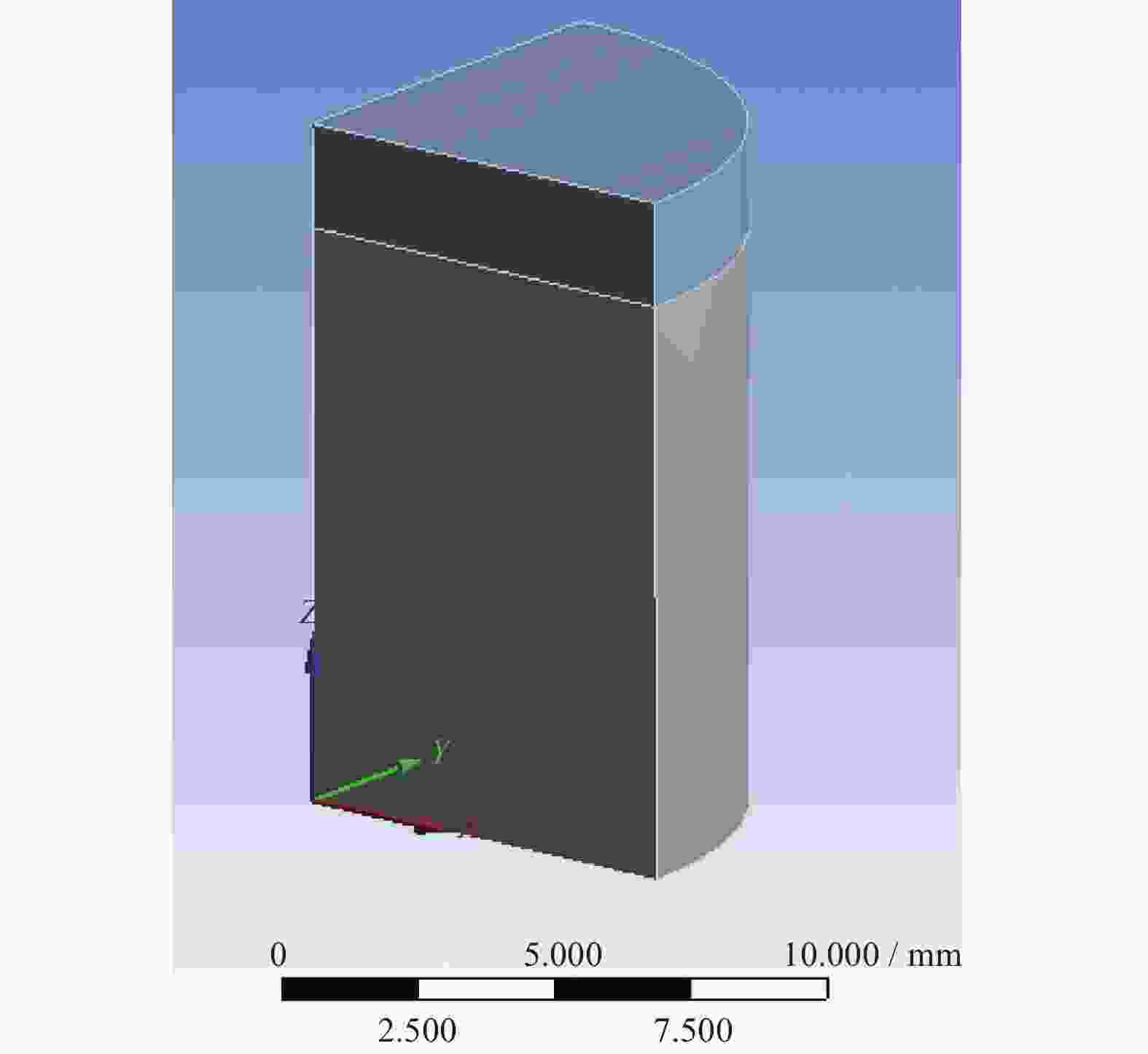
 下载:
下载:
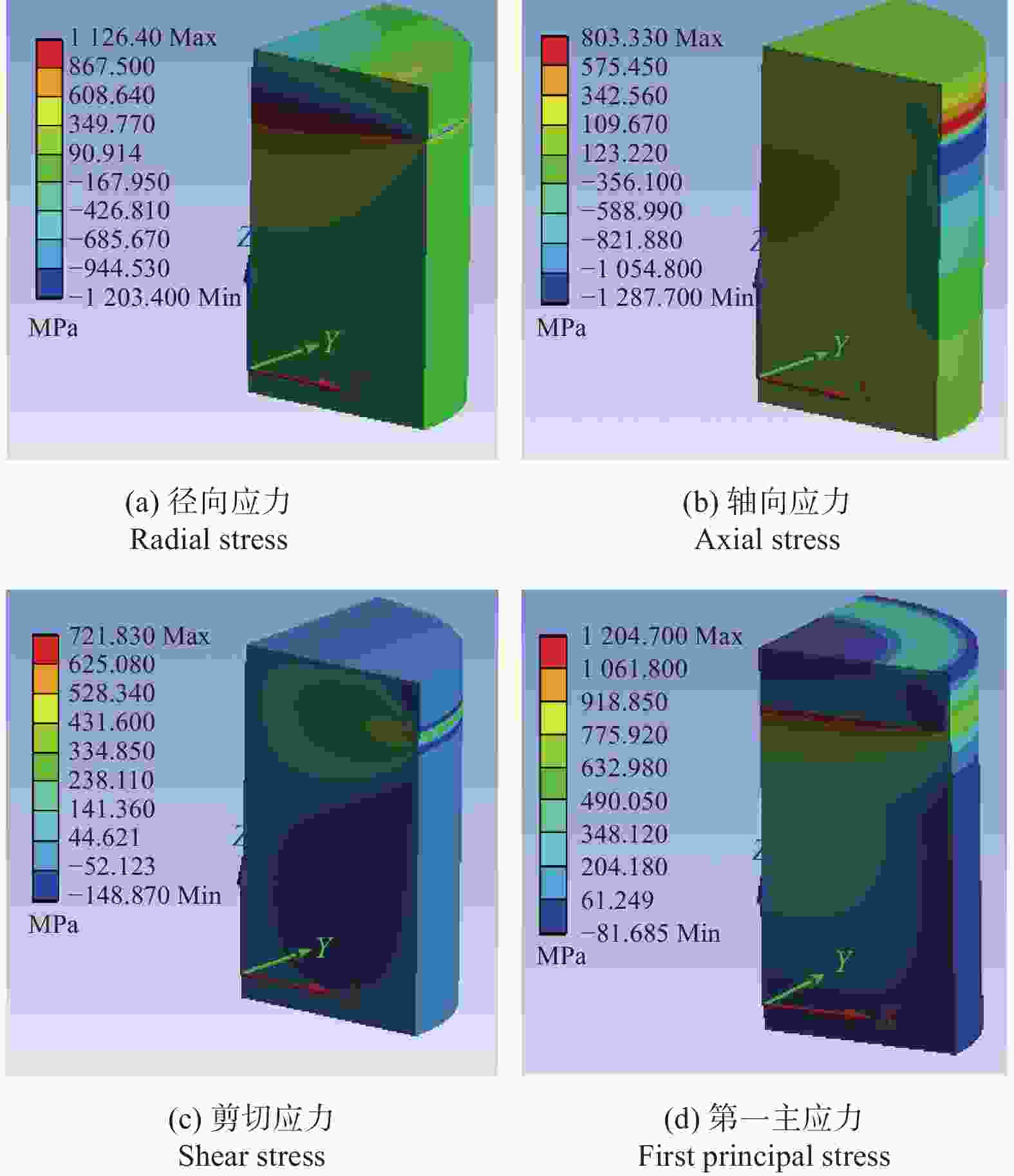
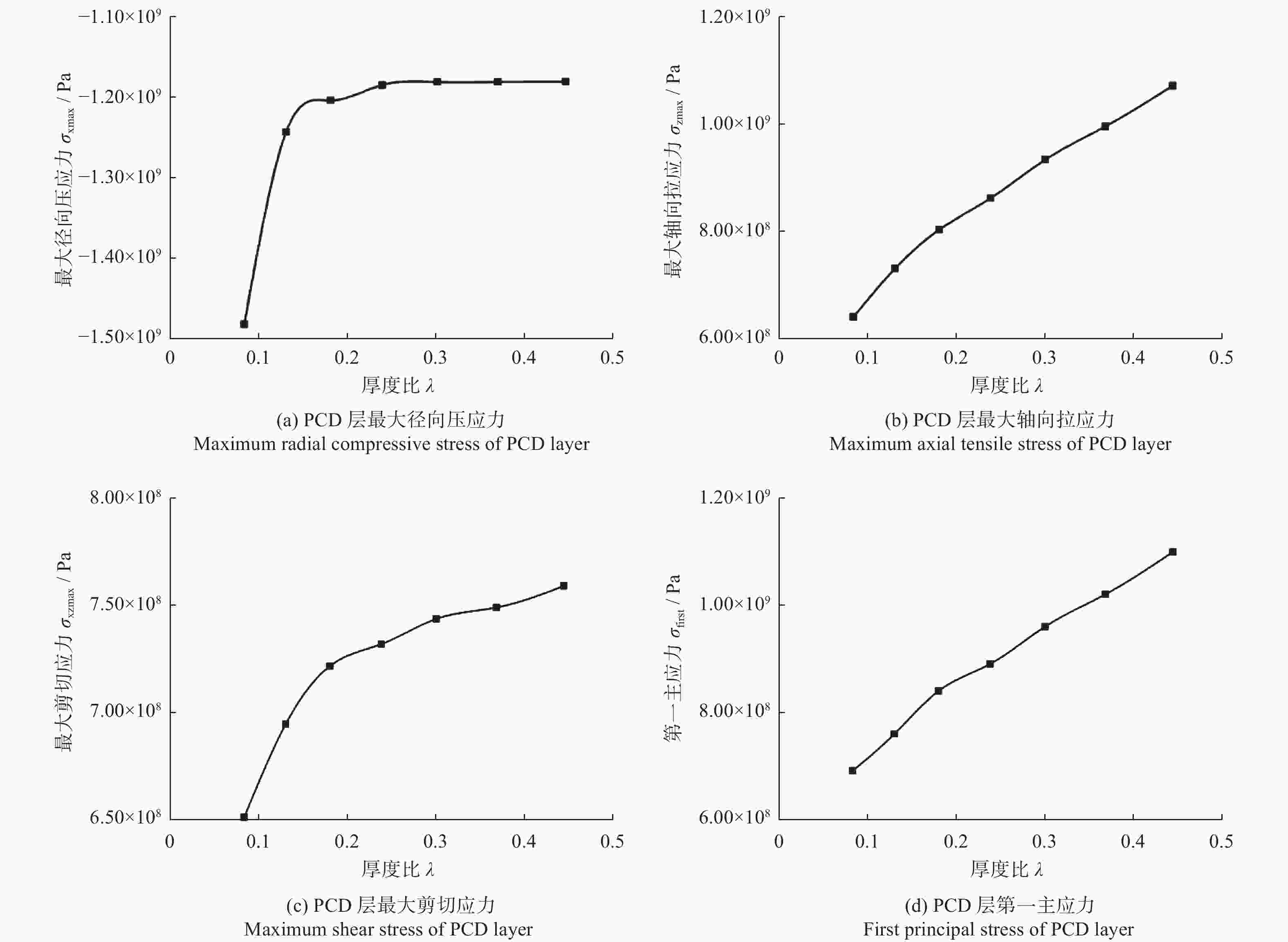
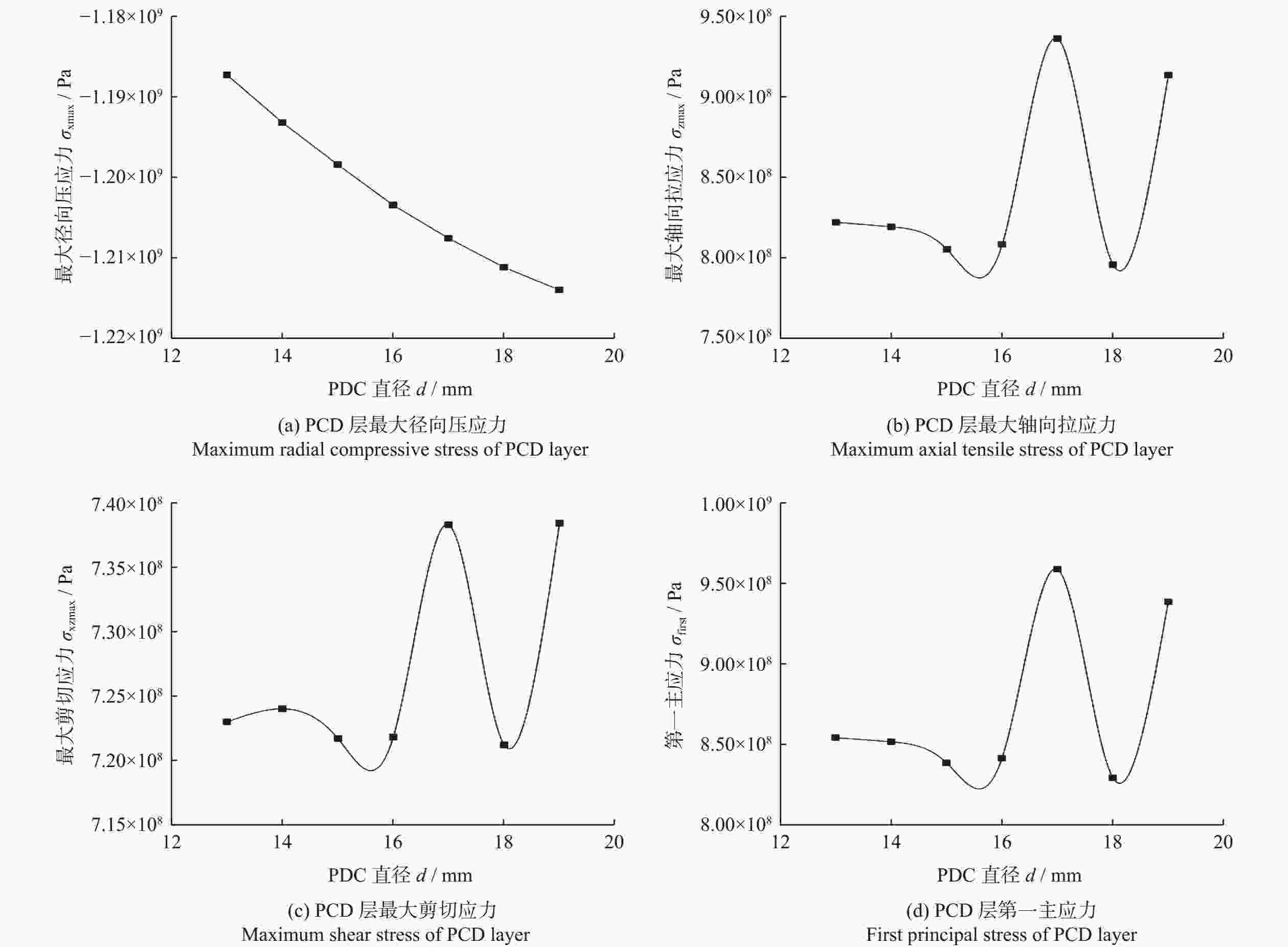
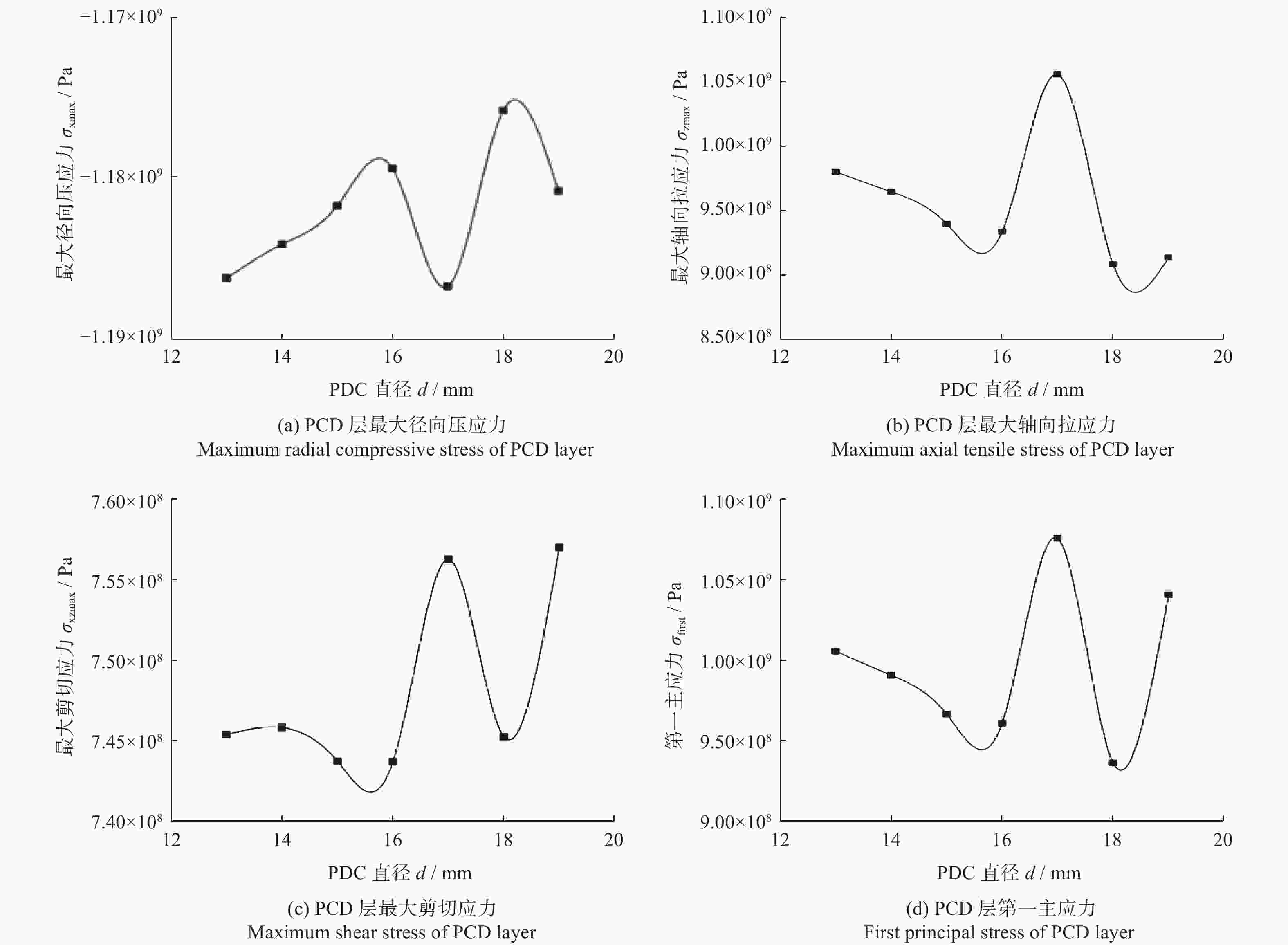


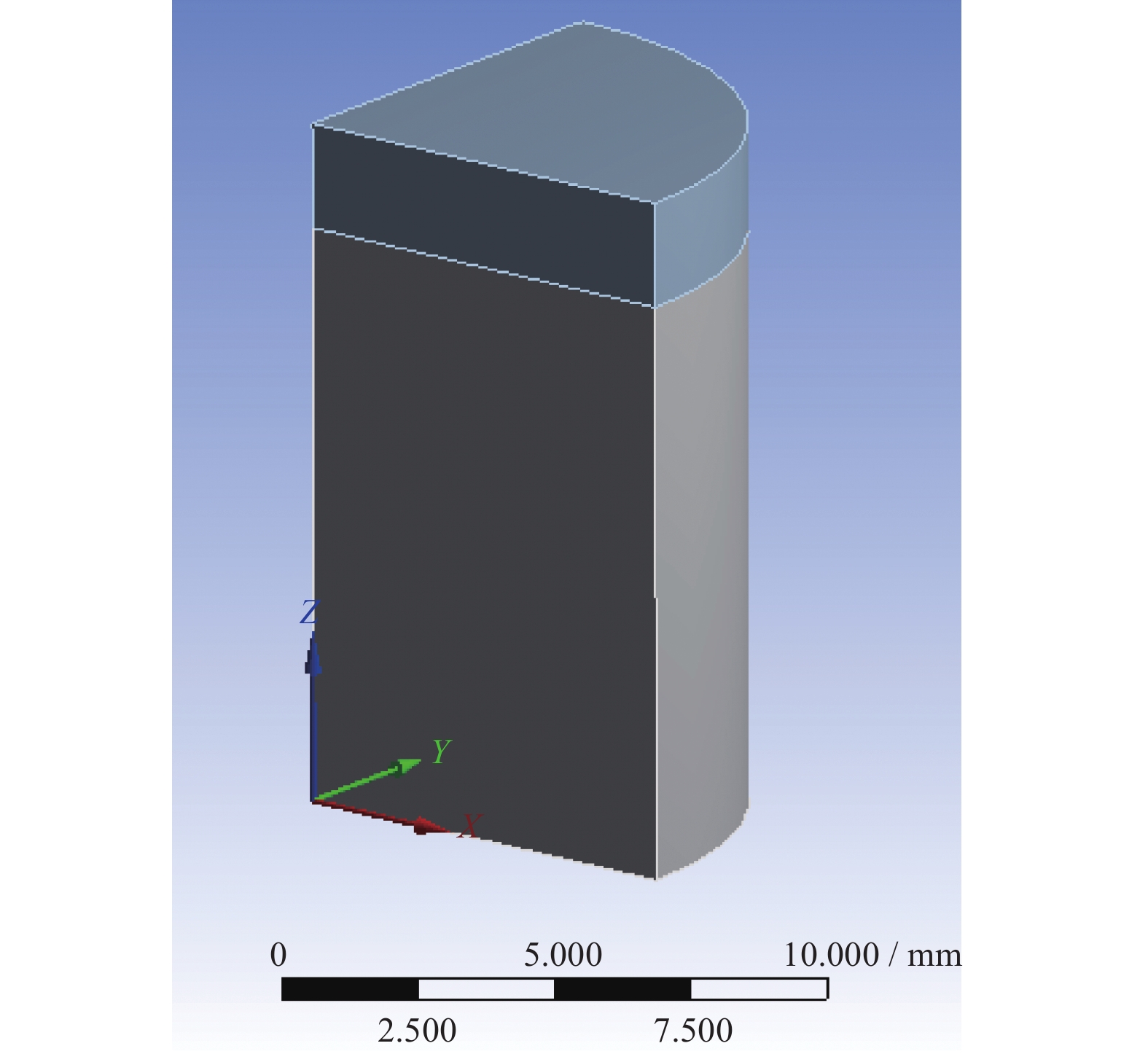
 邮件订阅
邮件订阅 RSS
RSS
